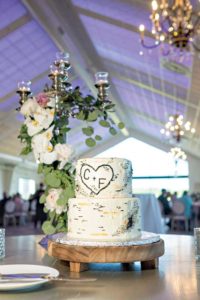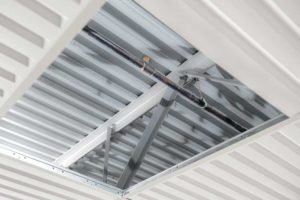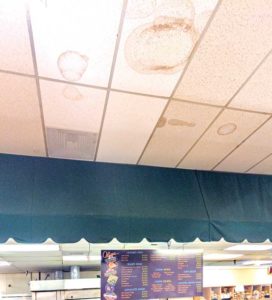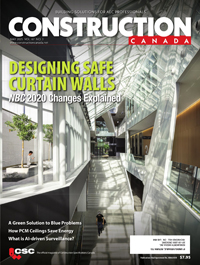Meeting restaurant ceiling requirements
Thermoformed ceiling panels

Thermoformed panels are relatively lightweight, made from thin sheets of rigid plastic. They are easy to install, and available in many colours and 3D decorative patterns. When made from transparent or translucent materials, they can be installed as luminous ceilings beneath economical, colour-controlled light-emitting diode (LED) strips. The colour of the light can be programmed with a digital multiplex (DMX) controller. This allows the ceiling to change colour and lighting intensity throughout the day to create different lighting schemes for the breakfast, lunch, dinner, and late-night crowds, an advancement of the concept known as dayparting in the hospitality industry (Figure 1).

In restaurants with fire suppression sprinkler systems, some thermoformed panels have an unusual advantage. They comply with NFPA 13, Standard for the Installation of Sprinkler Systems, section 3.3.6. “Drop-Out Ceiling. A suspended ceiling system, which is installed below the sprinklers, with listed translucent or opaque panels that are heat sensitive and fall from their setting when exposed to heat.” Sprinklers can be installed above the ceiling plane and out of sight when the grid is populated with drop-out panels. In case of fire, heat causes thermoformed panels to soften, deform, and drop out of the grid and allows sprinklers to function. Drop-out panels enable the designer to avoid the visual intrusion of sprinkler heads on the ceiling; in luminous ceilings, they also avoid the shadows sprinklers might cast on luminous panel. Drop-out panels reduce the cost of sprinkler installation by allowing the sprinkler layout to be optimized and by simplifying trade co-ordination. Similarly, perforated metal panels with at least 70 per cent open area can also be installed beneath sprinklers (Figure 2).
If an existing ceiling grid ceiling is discoloured or damaged, T-bars can be repainted or, to reduce time and labour required, covered with adhesive-backed decorative strips or snap-on grid-cover strips in colours which match or complement ceiling panels.
Back-of-house needs
In the back-of-house—areas not generally accessible by dining patrons—esthetics are not usually the driving force in design. The required performance of the ceiling has more to do with supporting the functions of the staff: food preparation and service in an environment that is clean and hygienic, and safe for the staff to work in.
Cleanliness
Ceiling materials throughout the premises need to be cleanable under the health regulations, but the type and degree of soiling and contamination is more challenging in the kitchen than in the dining room. Cooking has been identified as a significant source of indoor air pollution, and grease, smoke particulate, and stains from foods such as red wine, mustard, and cooking oil are tough to remove. Finishes must withstand water, cleansers, and degreasing agents, as well as the scrutiny of public health officials.
As described in the previous section on Front of House needs, only some of the provincial and territorial health regulations, as well as some municipal codes, cover food preparation and food storage areas specifically. They are largely similar to the regulations cited above for in terms of require soundness, durability, and cleanability. The Nova Scotia and Alberta regulations contain the following the sentence specifically referring to suspended ceiling systems in back-of-house: “Inserts for false ceilings must have a non-porous (smooth), washable, impervious finish in areas where food is prepared or stored.”
Commercial kitchens generally have overhead fire suppression systems, exhaust fans, pipes, and ductwork upon which grime can accumulate and then fall into food. Such a situation would fall afoul of the general requirement for sanitary conditions. A drop-in suspended ceiling (if it does not interfere with a sprinkler system) can block such contaminants from coming into contact with, or falling from, the overhead services, while still leaving services accessible for maintenance.
Moisture management
Food preparation areas can be humid and wet environments. They are prone to condensation and leaks through the numerous roof penetrations for plumbing and venting. Finishes should be non-absorbent and resistant to sagging and the growth of mould and bacteria.

Conventional mineral fibre panels are absorbent, and once wetted, can sag (Figure 3). The exposed surface of vinyl-faced mineral fibre and gypsum board panels are washable, but they can still absorb moisture from above and through their edges.
Acoustics
Kitchens are often noisy working environments, and acoustic control may be needed to allow clear communication among the staff and to limit noise escaping to quieter customer areas. It is not practical to perforate kitchen ceiling panels, as doing so allows contaminants to accumulate above the ceiling. Thermoformed panels avoid this problem because they act as diaphragms which allow noise to pass through the ceiling and dissipate in the cavity above. However, it should be noted thermoformed panels should not be used above ovens, ranges, and exhaust hoods, or where ceiling temperatures exceed limits stated by the manufacturer (e.g. one popular brand of thermoformed panels has a ceiling temperature limit of 49 C [120 F]).
Light reflectance
Ceilings with high light reflectance provide more economical illumination, enhance safety, and improve productivity. The British Columbia Food Premises Regulation require food handling premises are “(g) provided with artificial lighting that is adequate in intensity to permit the sanitary operation and maintenance of the premises.” Ceilings with high light reflectance help distribute illumination more evenly and less unidirectionally, reducing shadowing and providing a safer working environment.







